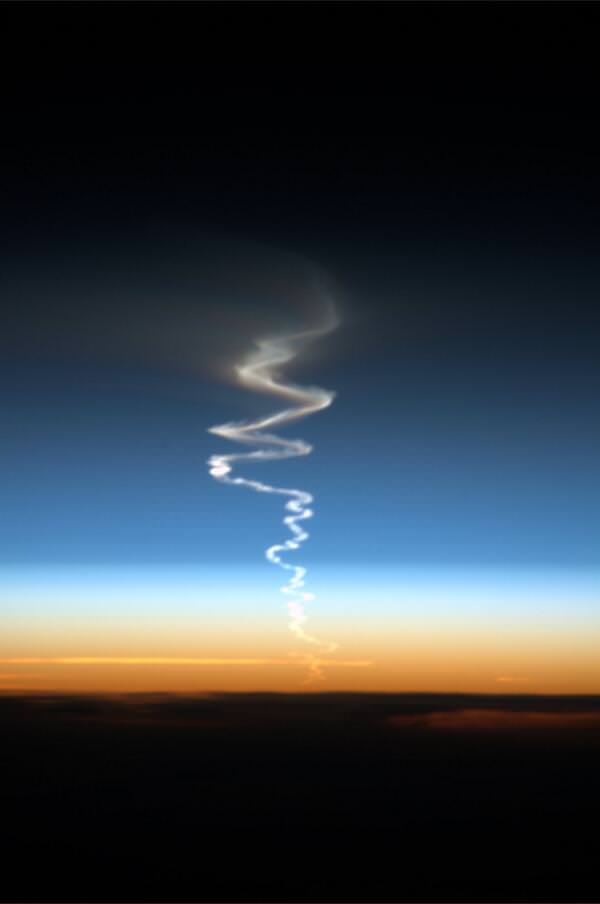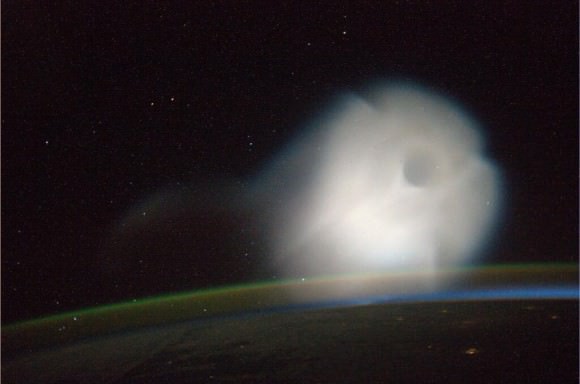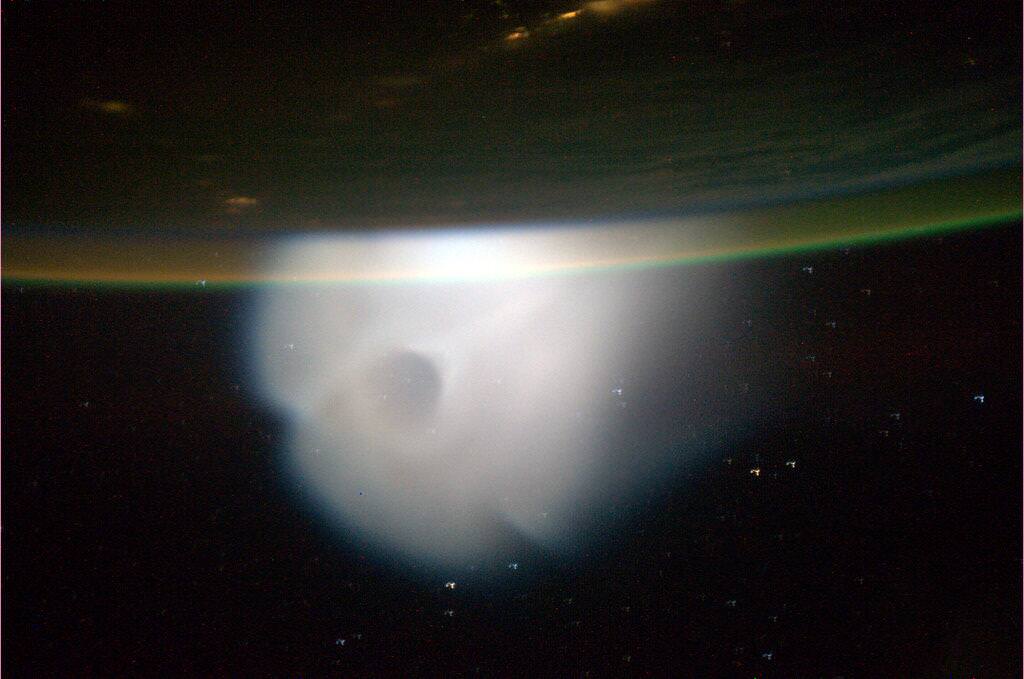The astronauts on board the International Space Station saw a strange and unexpected view out their windows yesterday. “Saw something launch into space today. Not sure what it was but the cloud it left behind was pretty amazing,” tweeted NASA astronaut Mike Hopkins.
ESA astronaut Luca Parmitano also got a shot of the cloud, as well as another picture of a contrail left from the launch.
So what launched into space? Of course, there was no launch from NASA because of the government shutdown, and I couldn’t find any other launches on the docket anywhere else, so I checked in with Robert Christy at the Zarya.info website, who usually knows of everything going up (or down) in space.

“Without precise date, time and location it’s not possible to say for sure,” Christy replied, “I believe there was a missile launch from Kapustin Yar (Kazakhstan) on October 10 so if the photo was taken over the Eastern Europe or central Asia region than that might be what he saw.”
Doing a search for that, I found a notation on the RussianForces website that said:
Strategic Rocket Forces carried out a successful test launch of a Topol/SS-25 missile on October 10, 2013. The missile was launched at 17:39 MSK (13:39 UTC) from Kapustin Yar to the Sary Shagan test site in Kazakhstan. According to a representative of the Rocket Forces, the test was used to confirm characteristics of the Topol missile, to test the systems of the Sary Shagan test site, and “to test new combat payload for intercontinental ballistic missiles.”
I had thought ICBM’s were a relic of the Cold War, but according to Wikipedia, “As of 2009, all five of the nations with permanent seats on the United Nations Security Council have operational long-range ballistic missile systems: all except China have operational submarine-launched missiles, and Russia, the United States and China also have land-based ICBMs (the US’ missiles are silo-based, China and Russia have both silo and road-mobile missiles).” Additionally, Israel launched an ICBM test in 2008, India test-fired one in 2012 and there was much speculation that a launch by North Korea in December 2012 to put a satellite into orbit was really a way to test an ICBM.
Parmitano also got an image of the cloud:

“An immense cloud forms outside the atmosphere after the disintegration,” Parmitano said via Twitter.
Robert Christy noted that at the launch time noted by the RussianForces website, the ISS was over Iran, heading northeast towards Mongolia, and the Sun was about to set at Kapustin Yar.
“The view from the ISS would have been with a low sun angle, shining ‘over the photographer’s shoulder’ – hence the rather striking image against a darkish background with no glare from the Sun,” Christy told Universe Today via email.
Oh, the things you can see out your window in space!

